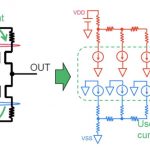Portland, Oregon is a hotbed of innovation for software development companies and I tend to scan the headlines of my local newspaper the Oregonian, which is where I first started to read about Jama Software a few years back. Curiosity and opportunity drove me to meet with Trevor Smith of Jama in their Portland office. We chatted for a few hours and I summarized our meeting with the following Q&A interchange to see how they are serving the semiconductor design market to connect requirements across hardware and software teams.
1) When was Jama founded, who was the first customer, and what challenge were they trying to
solve?
A: Jama was founded in 2007 by our Chief Strategy Officer, Eric Winquist, after witnessing first-hand the common frustrations companies face in delivering complex, systems-driven products to market. Teams schooled in a more collaborative, transparent way of working experience road blocks when incorporating outdated technology into their processes and workflows. By providing a solution that brings teams together in a way where they can structure their data to gain meaningful insights around what they are building and why, while incorporating collaborative features that teams desire, Jama Software is bridging the gap between complex systems architecture and design and meaningful collaboration.
2) What industries does Jama serve and why?
A: We have found a strong fit with industries that are either highly regulated, life-, safety-, or economy-critical like Automotive, Medical Devices & Life Sciences, or Aerospace & Defense, or industries that are developing highly complex systems of systems like Consumer or Industrial Technologies, and we’ve seen an especially good fit in the Semiconductor industry where there is a mix of both of those themes: supplying to highly regulated industries (like chips, sensors, etc. for autonomous driving), or complex system design and development like SoCs, FPGAs, etc.
A challenge that we have in the Semiconductor industry is that most teams are working so fast that they typically don’t manage requirements well, if they do it at all, or they don’t see a need to slow down and put a process around their requirements. The benefits we’ve seen in serving the semiconductor market is that by providing teams a platform where they can structure their data to understand and scope the impact of a change, ensure complete test coverage and validation and verification of their requirements because those relationships are visualized, and allowing them a way to track all of the design compromises and conversations that take place around requirements can save them time, help them deliver not only a higher quality product by reducing requirements related defects, but also ensure they are delivering what the customer asked for, and that is something that instills confidence in their customer and can help lead to repeat business, growing their organizations share of that market.
3)What type of engineer would use Jama?
A: Typically systems architects and systems engineers are the ones in the system creating requirements, submitting requirements for review, etc., but also anyone who has a hand in product definition, be it defining a new product and taking that to market, or variants on a previous version of a product – the titles of those folks can vary quite a bit from company to company, but those folks can be on the Marketing or Business side of the house, or on the engineering.
We do, however, see in Semiconductor companies the System Architect (or Systems Engineer) being the ones who benefit greatly from having a solution like Jama – the concept of having a solution that provides full context around what is being built, why it is being built in such a way, and transparency and accountability for those who are demanding that can be a huge time saver because they know exactly who to go to for questions, they can understand the impact of a proposed change, and they can ensure complete coverage all the way through to validation, verification, and test.
4) Who are some of Jama’s competitors and why is Jama different?
There are some requirements management systems out there. A common one for those who have spent time in the Automotive or Aerospace & Defense industries is IBM DOORS. What we hear constantly from our customers & prospects is that with legacy (read outdated) systems like DOORS is that they are just not flexible or configurable enough to the way teams need to structure their data. Hardware and Software teams have different processes they prefer to follow (ie waterfall versus Agile), and Jama allows teams to structure their data and projects in the way that fits them best. In addition, teams want and need a more collaborative structure around requirements definition and review. Lastly, one of the biggest things is the accessibility of the solution. DOORS users consistently complain that you have to be a power user to have any interaction in the tool. With Jama business teams can interact seamlessly via email, engineers working primarily in simulation or CAD tools don’t necessarily want to learn a new tool, but they still want to provide feedback on requirements – Jama allows that interaction to take place without disruption and that has positive impacts across the board – requirements have a higher likelihood of being correct based on the feedback from the broader team, so by the time it gets to the electrical engineer, for example, they have already given feedback and are more likely to satisfy the requirement or specification without the thrash and churn that slows people down.
More common, however, especially in more traditionally fast-moving industries like Semi is that teams are most likely using MS Word and Excel, PowerPoint, and collaborating via email or in person meetings that require a ton of time and overhead.
The biggest problem in using tools like Word and Excel to manage requirements is the manual effort associated with working in those tools. In Michael Kennedy’s book Product Development for the Lean Enterprise he talks about Toyota and the fact that their engineers spend 80% of their time on engineering while suggesting that at Western companies it may be the opposite and engineers may be spending only 20% of their time on engineering tasks. Given that we have helped move so many companies from a document-based process to a web-based process, this doesn’t surprise me one bit. The amount of time spent reconciling requirements documents to avoid disparity in requirements versions, manually updating traceability relationships and requirements test coverage for compliance, not to mention reviewing requirements documents, is astonishing, but most people don’t know there is another way, a more automated solution, and that is where Jama Software comes in.
5) Why do semiconductor companies use Jama?
We have found that there are 2 major challenges facing the semiconductor market. The first is the complexity of the products being produced is increasing at an incredibly rapid pace. Companies are forced to add more functionality and include software with the solutions they are providing. This increase in complexity means semiconductor companies must find a way to ensure they are building product customers want and at the right time. We have found that Jama allows our customers to keep track of the customer’s requirements, collaborate on tradeoffs with the engineering teams and track those requirements all the way through verification. It is no longer sufficient to write an MRD or a PRD and load it somewhere in Sharepoint, the requirements and specifications must be tracked and connected to each other in a system like Jama. Jama allows our customers to reduce the number of tape outs at the end of a project because the engineering teams have a database that allows them to view and discuss the requirements and specifications in real time.
The second challenge relates to new market opportunities. The explosion of interest in technology like automated driving and the automotive space as a whole has led numerous semiconductor companies to begin developing products for these regulated markets. Automotive regulations like ISO 26262 require companies to be able to demonstrate the traceability of these products requirements. Jama has done an extensive amount of work with regulated customers incuding an audit of the tool itself to be fit for purpose for companies building products for the automotive segments. By using Jama our customers have the necessary tools to unlock the revenues and profits from these regulated markets.
Our customers realize more return on their engineering investment by allowing engineers to focus on building great products and not focus on unnecessary searching. We also have experts who come from the semiconductor industry who provide the best practices of product development to increase the adoption of Jama within the companies who have selected us. This commitment to improving the product development process specifically for customers in the semiconductor market helps every one of the companies we work with.
6) What should I do to find out more about Jama?
Please visit our websiteor you can contact us here.
There is also an option to try Jama Software for free for 30 days.
We are also hosting a webinar with Methodics on April 27[SUP]th[/SUP], discussing the benefits and business value of connecting Requirements to IP. We will also show how Methodics and Jama Software are working together to solve that challenge.






